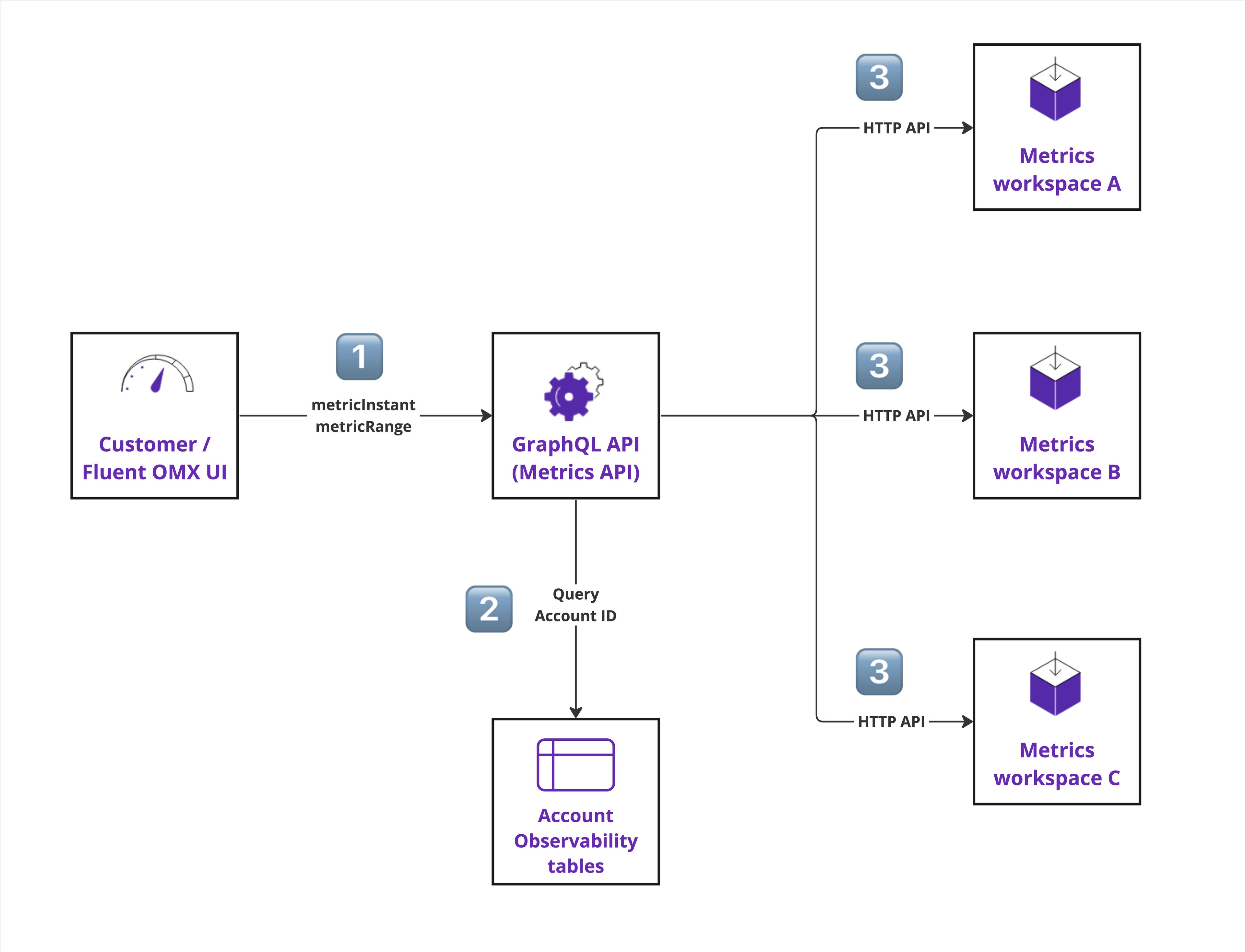Author:
Kirill Gaiduk
Changed on:
9 July 2024
This document is intended to describe to implementers Metrics technical details within the Fluent Big Inventory product.
Pre-requisites:
`metricInstant``metricRange`All customers' Metrics are isolated on the Fluent platform due to the Metrics Data Segregation.
The purpose of data segregation is to:

Metrics managing flow includes the following steps:
1. We instrument the Application Source Code to capture the Platform Metrics as activity occurs.
Two primary applications play pivotal roles in the Inventory Processing flow:
2. The Metrics data is routed (through the Metrics Collector) to each customer-specific Metrics workspace by remote writing endpoint based on the
`account_id`The Metrics data is stored in the Metrics workspace and ready for query.

Metrics API querying flow includes the following steps:
1. Two Metrics GraphQL queries are available for customers to retrieve the Metrics data:
`metricInstant``metricRange`2. GraphQL API identifies the account ID for the user from:
`fluent.account`Then Metrics API queries the corresponding Metrics workspace by the account ID.
3. After the Metrics API gets the Metrics workspace, it:
Copyright © 2025 Fluent Retail Pty Ltd (trading as Fluent Commerce). All rights reserved. No materials on this docs.fluentcommerce.com site may be used in any way and/or for any purpose without prior written authorisation from Fluent Commerce. Current customers and partners shall use these materials strictly in accordance with the terms and conditions of their written agreements with Fluent Commerce or its affiliates.